Affiliate Disclosure: By clicking through the links on this page and purchasing the products, you’ll be helping me out. This is done because I receive a kickback from the sellers at no extra cost to you! Thank you so much for supporting us!
Weight
7.76 oz/ 220g for men’s US9
Stack height
22mm total stack height
Zero Drop
Made for
Speed sessions
Longer runs for minimal runners
Fit
Average volume
Narrow/average wide midfoot
Average Wide Toe box
True to size
Feel
Flexible
Firm underfoot
Sock-like
Pros & Cons
+ Great toe box
+ Ground feel with cushion
– Tight midfoot
What do you want to know?
Common questions:
So you’re looking for a new low-stack height flexible runner, and you’ve heard that the Escalante range is the way to go. Sure, there’s the standard “Escalante 4,” but what about these “racers” you’ve just found?
You might think to yourself, I’m not a racer; why would I need a shoe named “racer”?
Well, don’t let the name mislead you! The Escalante Racers 2 is not just for racers. Its minimal design and foot health-friendly flexibility can benefit any runner, regardless of their running style.
Even though I’m a minimal runner, I still believe that cushioned shoes play a role in our running shoe rotation.
With the Escalante Racer coming in at 22mm and still maintaining some flexibility, this shoe is a perfect cushioned option for minimal runners and a great minimal option for higher cushion runners.
But first of all, we need to determine if the shoe fits YOU!
pssst: If you’re also curious about the Escalante 4, head over to the Escalante 4 vs Escalante Racer 2 comparison post!
Here’s the video version if you want it! 👇
From all accounts, the Escalante Racer fits very similarly to the original. And a quick visual check confirms that.
We still see a nice wide-toe box with ample big-toe room. This toe box is what Altra was originally known for, and lucky for us, we still see a toe box that’s wider than most on the market. The squared-off big toe area allows the big to splay optimally, and with only minimal little toe taper, most of us will be very happy with the shape.

The Escalante Racer is now listed as the Original foot shape! But I encourage you to ignore that fact. The Esclantes have always been as wide as some of the other original foot-shaped shoes like the Lone Peak, the major difference being the depth (I’ll come to that later). But I’ve found the shape of the Esclantes to be very similar to the Lone Peaks, if not a little wider in the toe box! I advise you to ignore the foot shape Altra defines and try the shoes on anyway! 🙂
The open weave upper allows for a deeper fit compared to other Escalantes. This goes for the Esclanate 4 and certainly the Escalante 3. I’d classify the Racers as an average-depth shoe. And NO! I’ve not had to change the insoles to gain more depth like I often have to in many other Altras. And even though the upper seems more secure than the Escalante 4, it almost feels more forgiving in-depth and is something I’ve enjoyed.

And there’s enough depth in the toe box to flex your toes! A fact that I’ve sorely missed in many Escalantes of late. For your feet to perform correctly, you want your toes to flex and move around freely, and the Racer encourages that.
Beware of the midfoot! If you’re like me, and the widest part of your foot is the midfoot, it may take a bit of readjusting to get comfortable in the Racer. And this is true across the whole Altra range for me. Yes, Altra’s are generally wider, but that is mostly true for the toe box and not necessarily the midfoot. I solve this by loosening off eyelets 1-3 to allow my foot to expand and breathe. For you, that may mean adjusting the laces in other ways.
Which Altra Shoe is for you?
Take a quick 4-question quiz to identify the perfect Altra running shoe for your feet! You'll get both road and trail options based on your answers!
The Escalante Racer 2 is true to size! I found the Men’s US9 perfect for my 26.5 cm foot. Granted, I mentioned the midfoot issue above, but as for length and depth, this shoe fits like a glove. A US9 is constantly my sizing across most of the Altra range, aside from some of the slimmer options like the Rivera and Timp.
The heel is very flexible with little to no structure. That’s exactly what we want from a minimal shoe, which usually translates to a perfect heel lock for me. However, on my first run, I had a little heel slippage. From that point on, I used a lace lock and found that the heel held well, but I wouldn’t consider it supreme (For me, that’s Xero Shoes!).
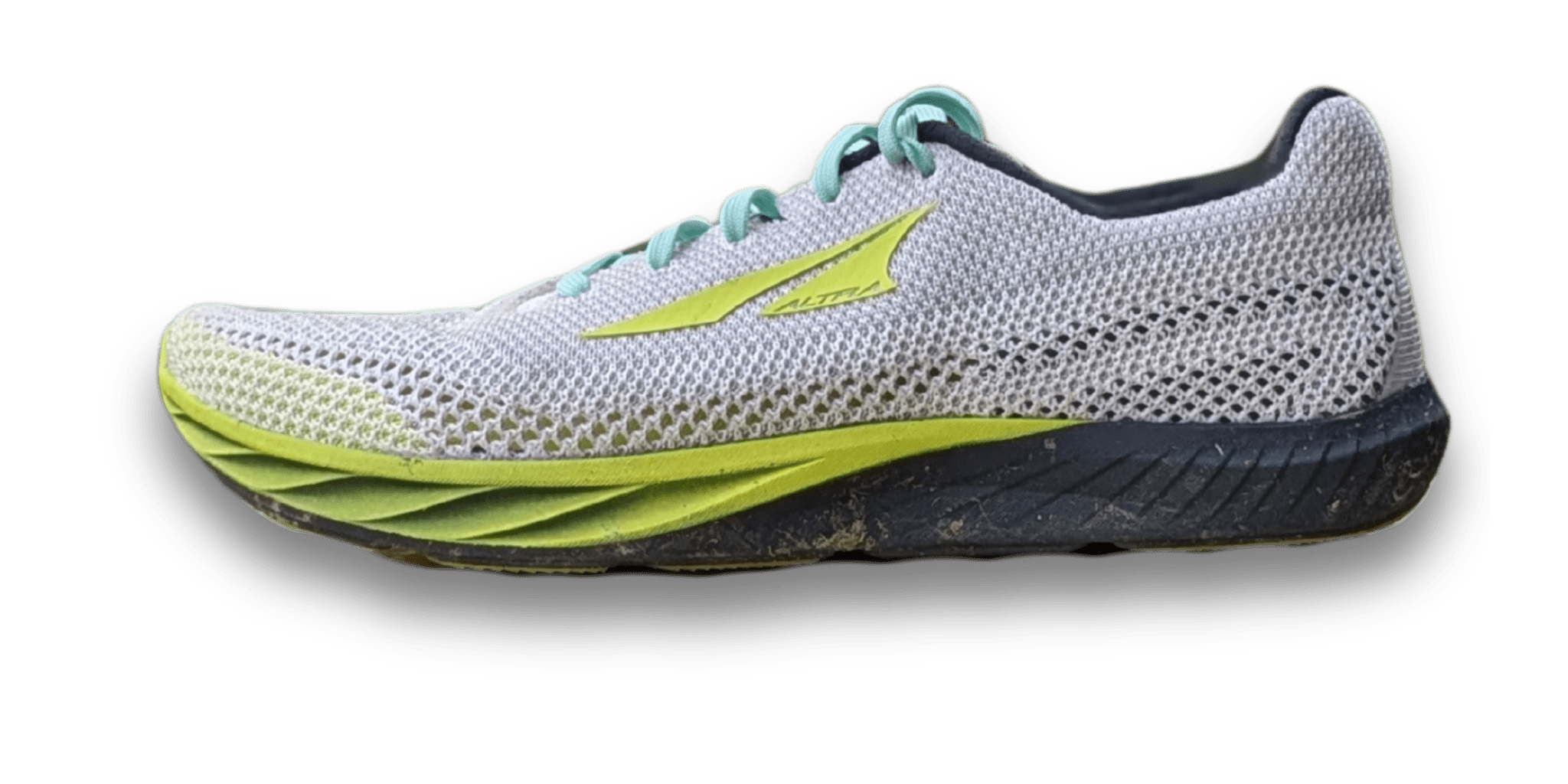
Altra Escalante Racer 2
I’ve been itching to get on to this section because this is where I think the Racer excels!
The Escalante Racer feels nothing like the new Escalante 4! If you’ve read my review of the Escalante 4, you’ll note how squishy I mention it feels. Well, the Escalante Racer is nowhere near the same. It’s actually firm, and that’s a good thing. When you want to pick up the speed, or even if you want more ground feedback, soft pillows under your feet are not ideal. Instead, you want a solid base. You don’t fall over the side when you corner a little aggressively. You get my point. The Racer is firmer, and it feels great!
I found that after 60km, the midsole started to break in. I’m not going to say they’re soft still, but I found the Racers did begin to soften after a bunch of miles. I can only imagine we’ll see a little more flexibility from now on.
It still has flexibility, but not quite as much as the original. I was not lucky enough to have the original Racer in my rotation, so I can’t verify this, but TD Miller has reported that this version of the Racer is a little stiffer. That is likely because they played with the midsole to make it a little more resilient. But I still found the shoe flexible enough, especially for a shoe with a 22mm stack height.
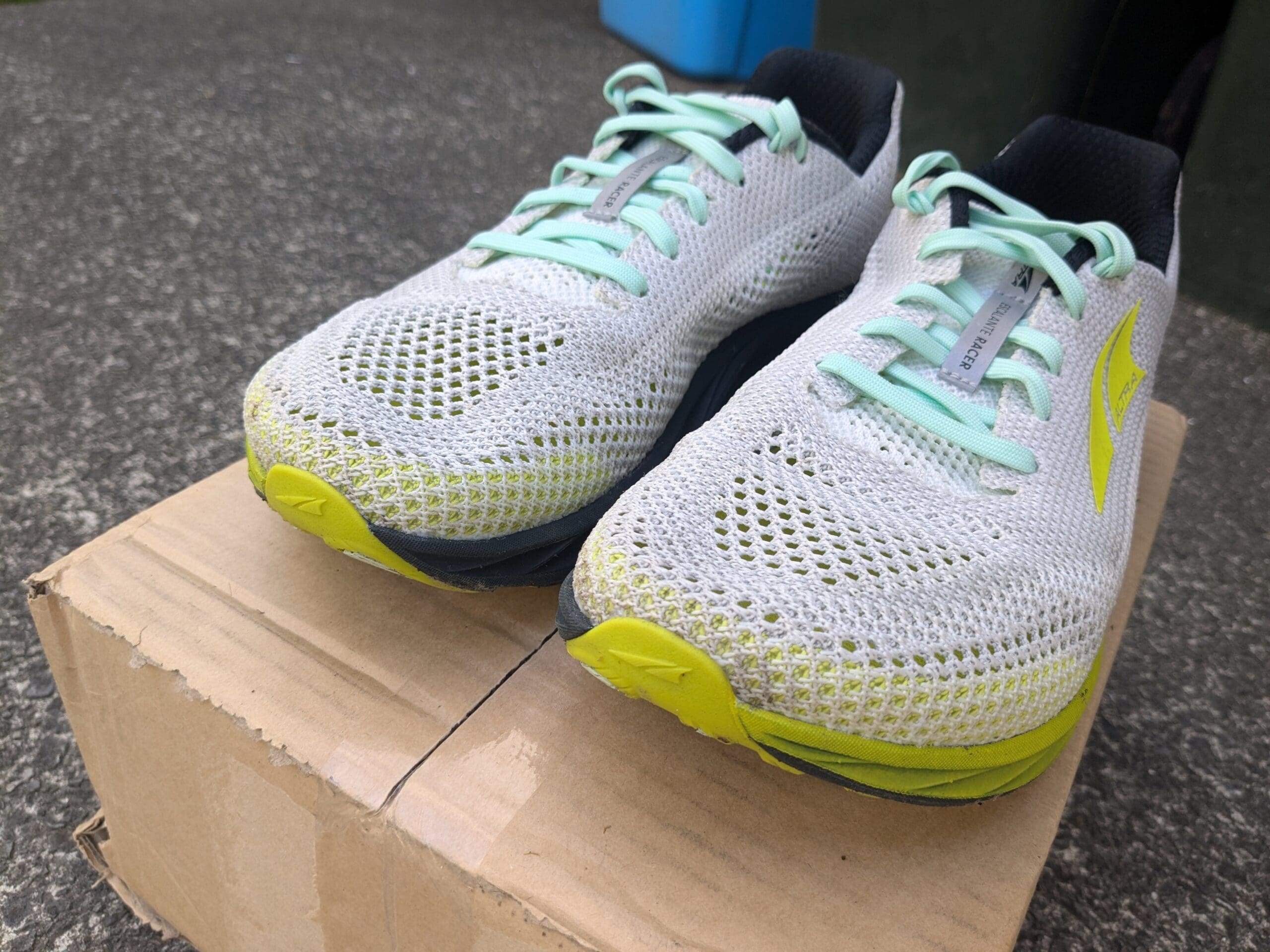
The upper is secure enough to stop you from rolling off the sides of the shoe. This is another small gripe I had with the Escalante 4. Whenever I picked up speed, cornering was unnerving. That’s different with the Racer 2 because the upper is not quite as flexible, ensuring your feet stay firmly in place. But still not too rigid that the comfort suffers.
We see a weight gain of roughly 20-30g. I love lightweight shoes, so anything that brings the weight down is a positive in my eyes. Sadly, the racer has gone the other way. I weighed these in at 220g, which is not heavy but heavier than the original Racer. I wouldn’t let this fact rule out the shoe, but it could be a deciding factor if you find a screaming deal on the original Escalante Racers.
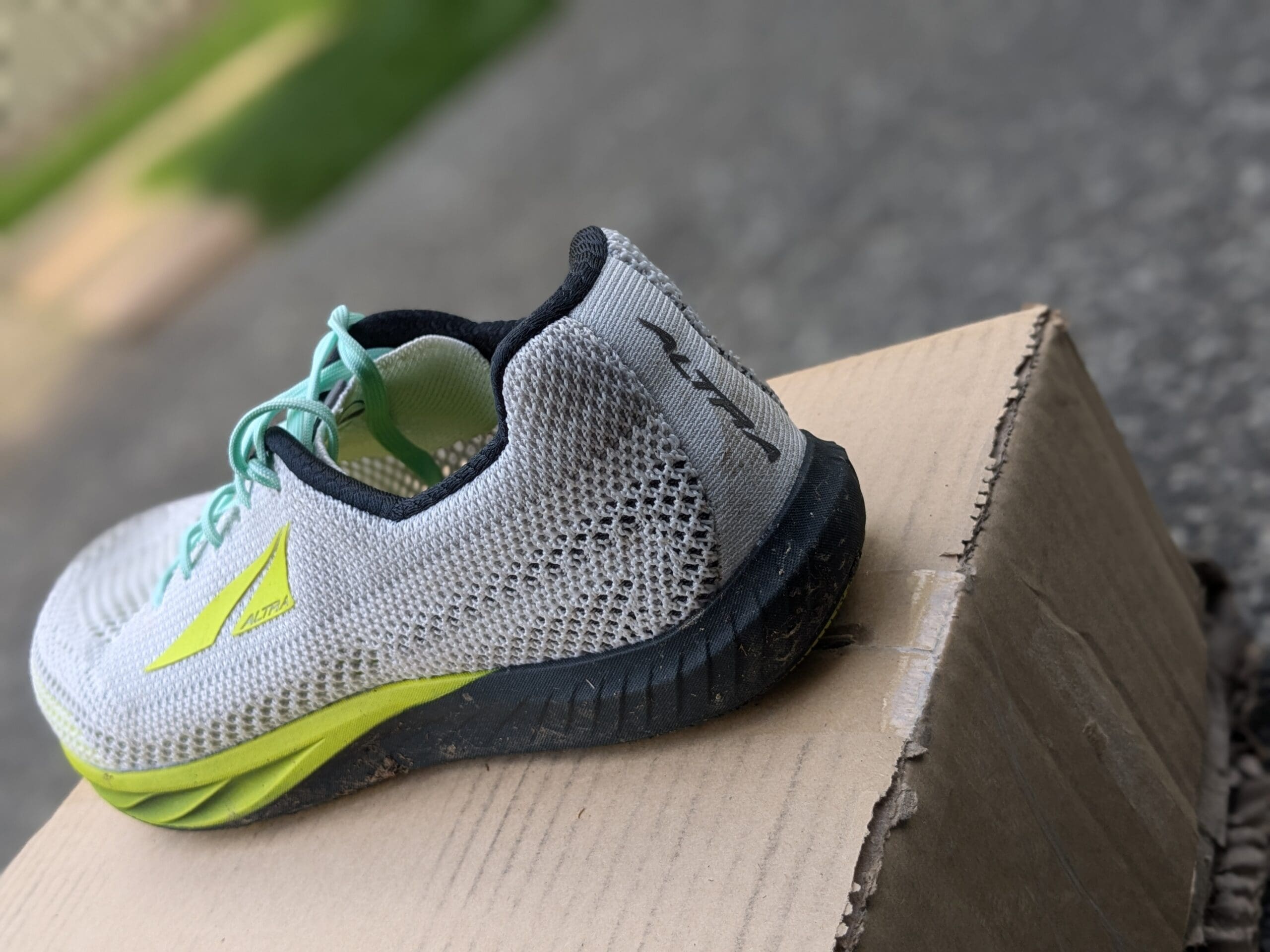
The familiar flexibility pair with 22mm of cushion pushed me to a new 5km PR! Now, I’m not saying that the shoes made me fast; as Kipchoge said, “It is my legs that are still doing the running.” However, the fact that I could get some of the minimal feeling with an added stack height certainly helped me lengthen my stride and utilize my strongest running patterns.
I never felt any slipping in wet weather, even though the rubber only covers part of the sole. We have rubber covering the forefoot and heel, exposing the midfoot. Therefore, you shouldn’t take these out on any rough trail for fear of damage. On the other hand, the minimal rubber still did well on wet roads.

Altra Escalante Racer 2
I normally hate getting to this section with Altra. Many of their models are weak and break down too early.
But with the Escalante, there’s a distinct difference.
Many past models have been pushed thousands of miles, and considering this Escalante Racer is similar to models we’ve seen in the past, I think we’ll see good longevity.
The upper is a tougher, semi-flexible weave optimized for comfort and longevity. I don’t believe Altra created the Escalante Racer upper with durability in mind, but the combination of material and shape certainly pushes it in the right direction. The Racer upper is distinctly different from the one we see on the Escalante 4, which I worry could be a little weak over time.
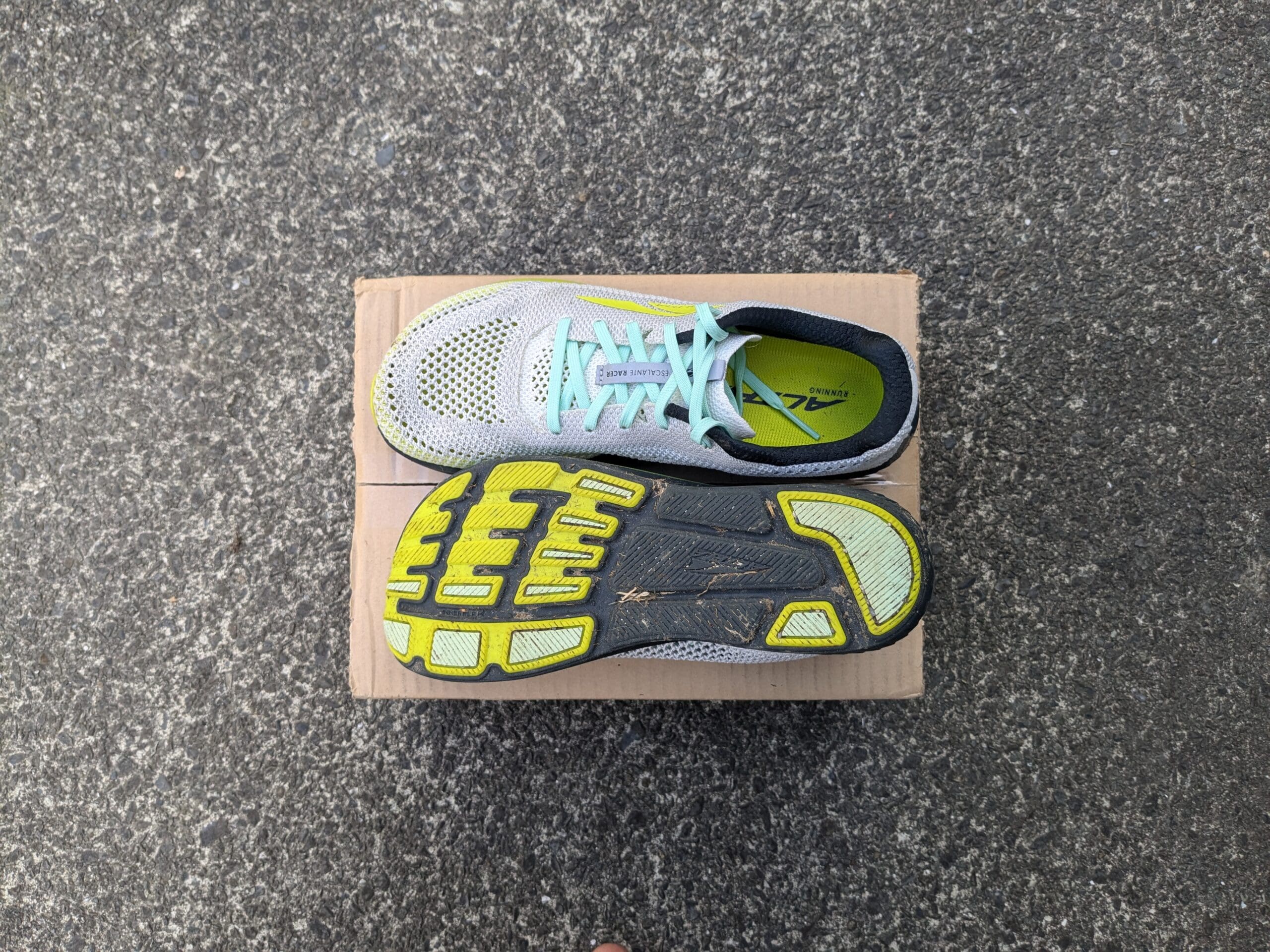
The lacing eyelets are reinforced with an extra layer of material, making them just a little bit tougher to withstand the forces from the shoe’s flexibility. These aren’t just small ringlets; the reinforcement extends throughout the tongue opening, creating an even more solid base.
The minimal outsole rubber keeps the weight down, but you’ll likely see less longevity. In the past, the Escalanates had a full rubber outsole. No matter what your foot strike or wear pattern, you can be sure they’d be rubber underfoot to reduce wear on the shoe. That is no more. Flip your old shoes over and check out the wear pattern. If you see heavy wear anywhere around the midfoot, the new Escalantes may fail early for you. A midfoot wear pattern isn’t common, but everyone is different!
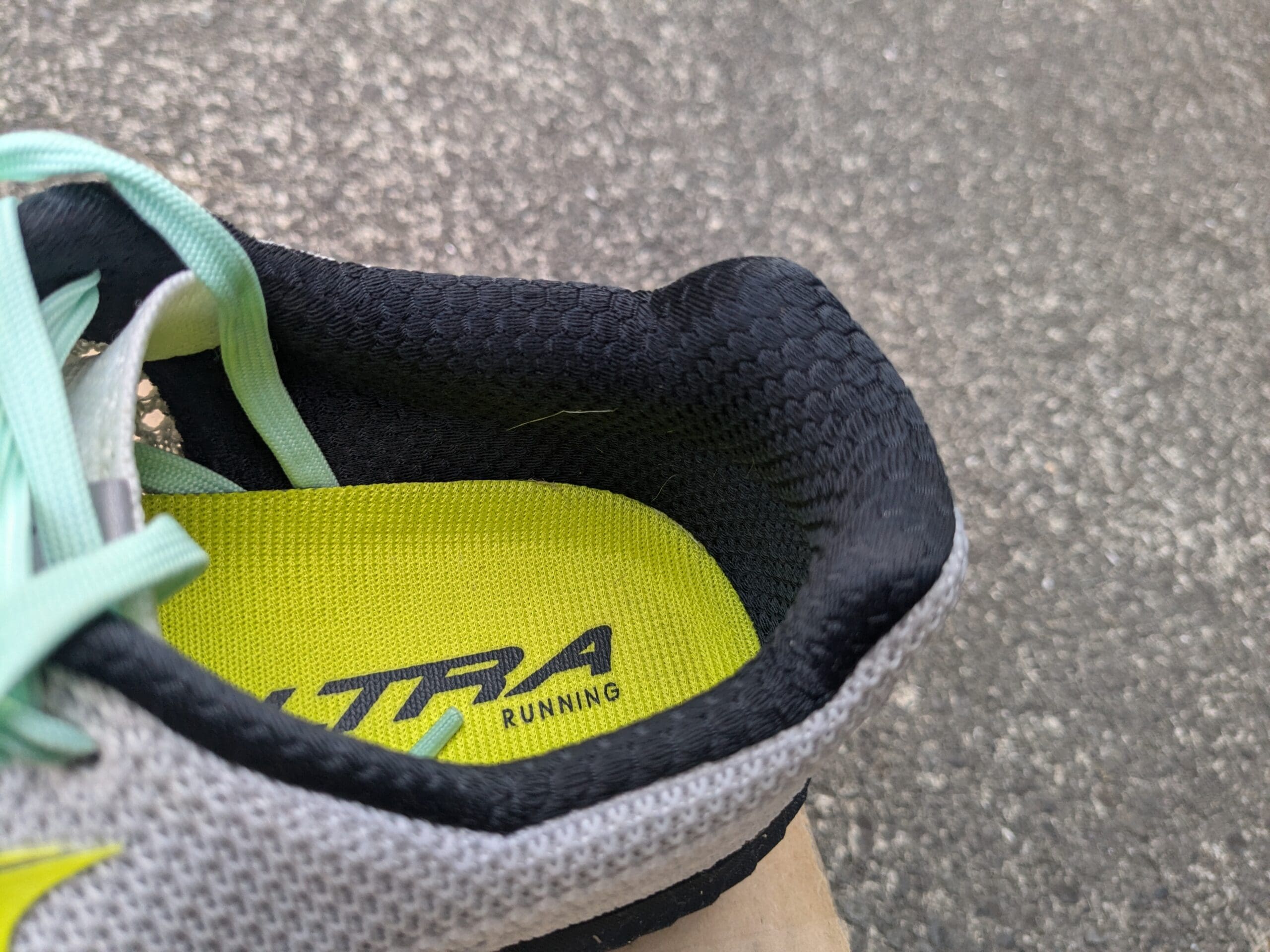
Because the midsole started softening at 60km, I can imagine the shoe could feel fairly “flat” quickly. With a minimal shoe like this, that’s not bad because we’re not looking for the bouncy plush feeling. But this one is down to how you like your shoes. Do you want a consistent ride long into the shoe’s life?
If you have any heel movement, you’ll see wear on the inner liner. This liner is a little grippy, which is good if the fit is perfect, but when you have some movement, that grip turns into friction—and friction turns into holes! Make sure you find the right size and get a good heel lock with a lace lock if needed.

Altra Escalante Racer 2
I’ve come away loving the Escalante Racer 2 and even kicking myself for not having the Racer in my rotation in the past!
The mixture of firm cushion and flexibility is exactly what a minimal runner like myself is looking for when wanting a cushioned alternative.
If you’re looking at the Racer because it has a lower stack height than you’re used to, that’s great! But just be sure to rotate the shoe slowly because it will put substantial stress on your feet and lower legs. Over time, your feet will strengthen, and you’ll be a better runner for it.
I’m super happy I have an Altra with a minimal stack height, a wide toebox, and a durable design that I can suggest again!
Thank you, Altra!

Altra Escalante Racer 2

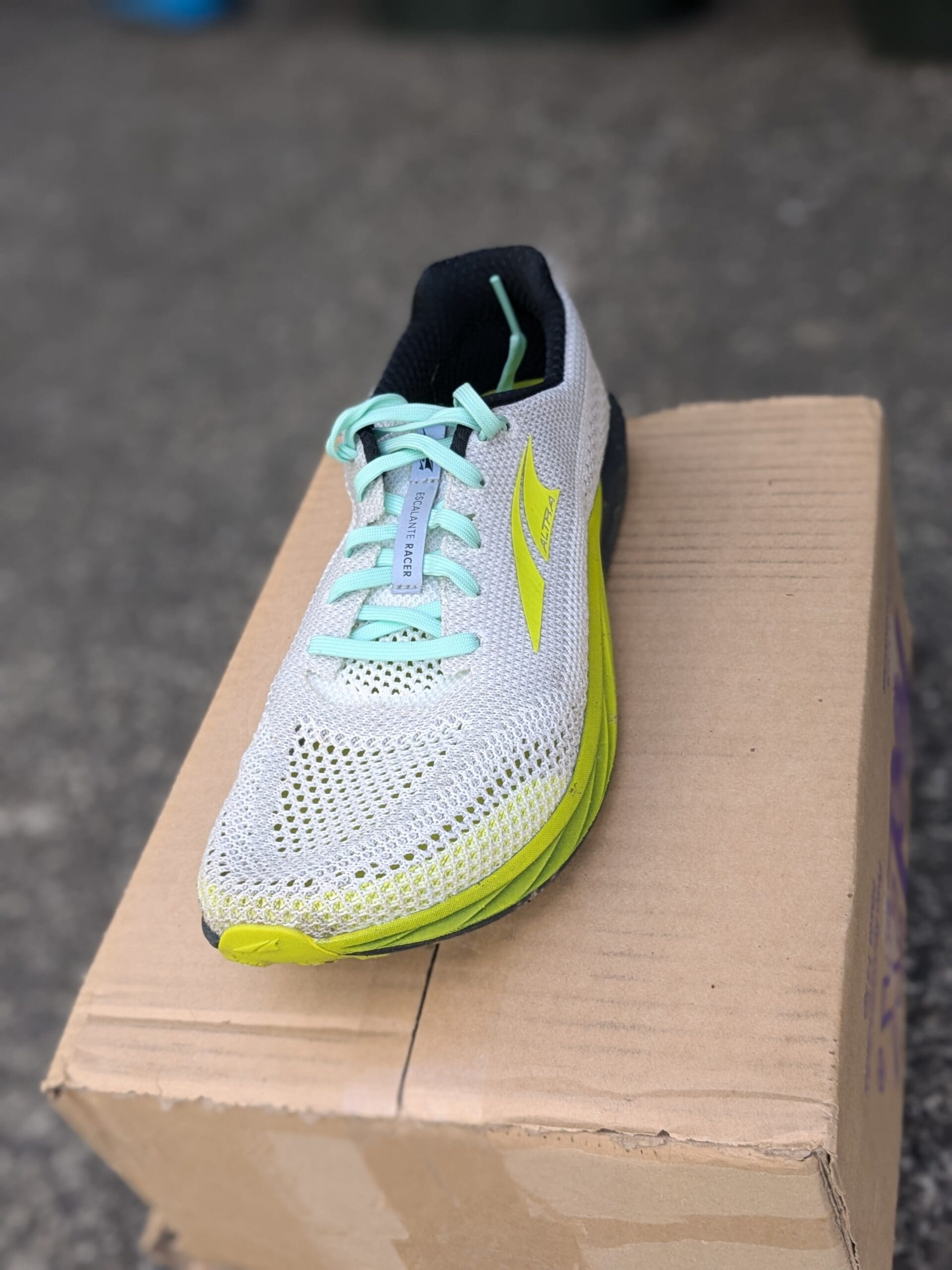
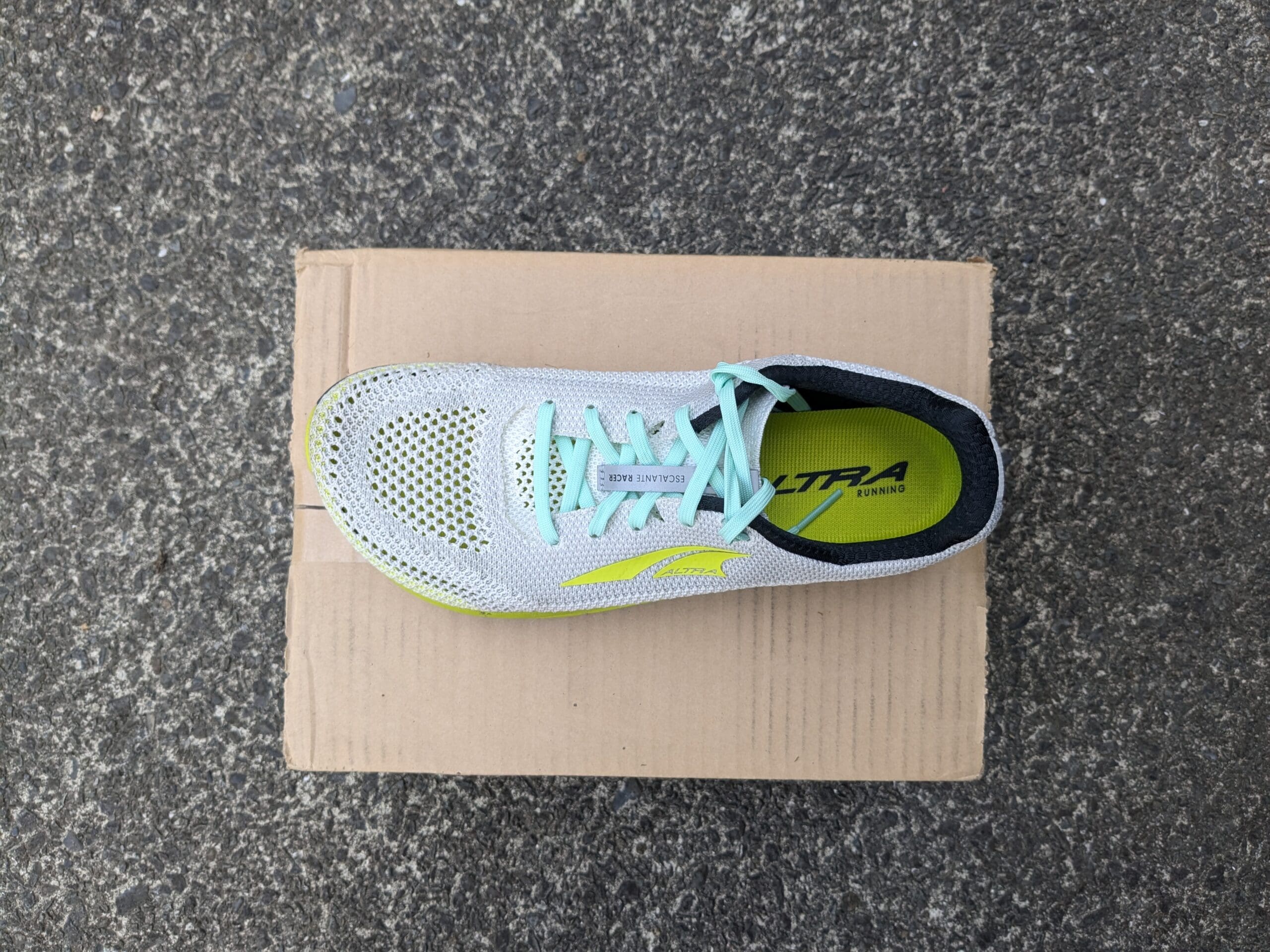


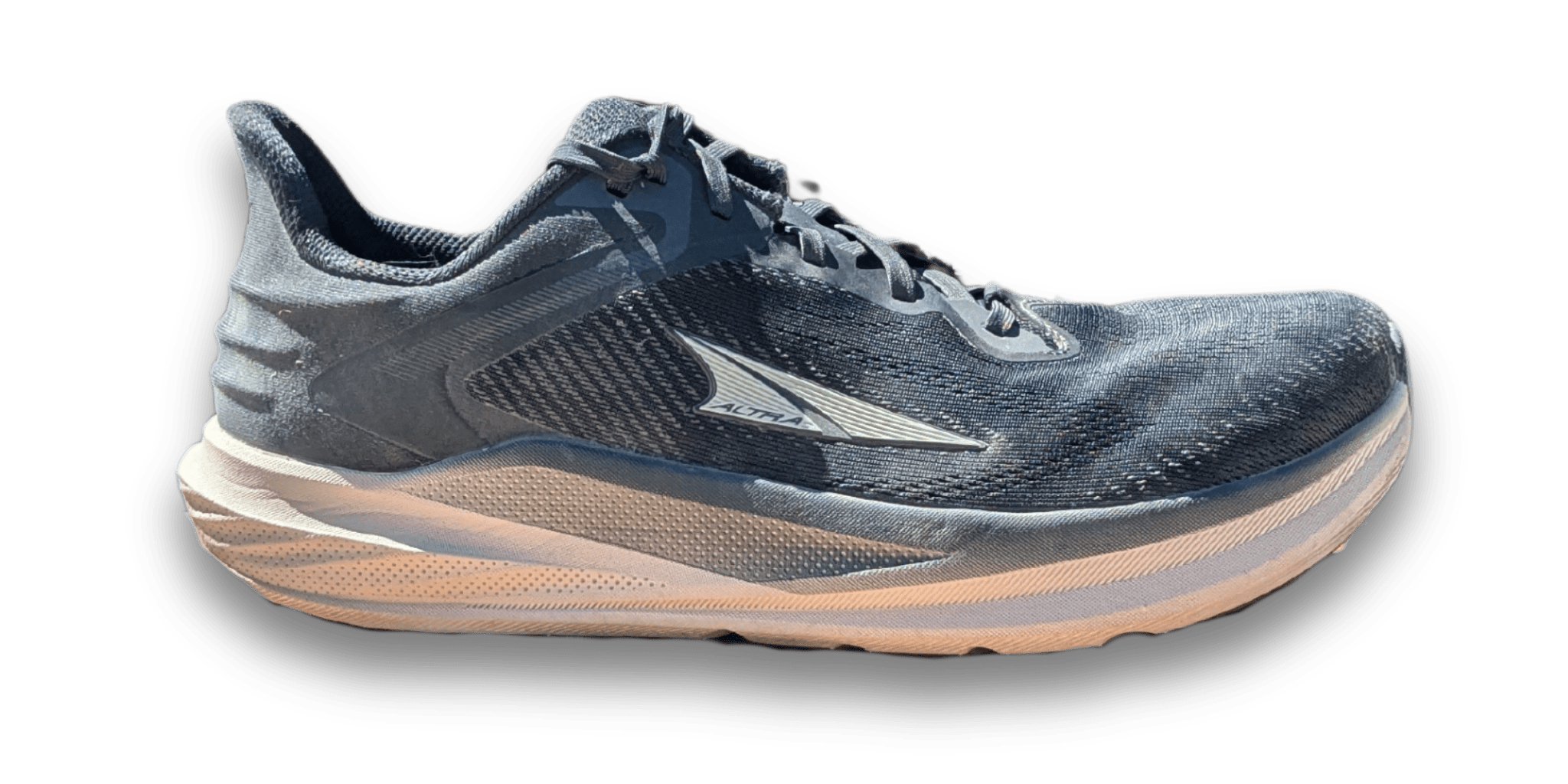
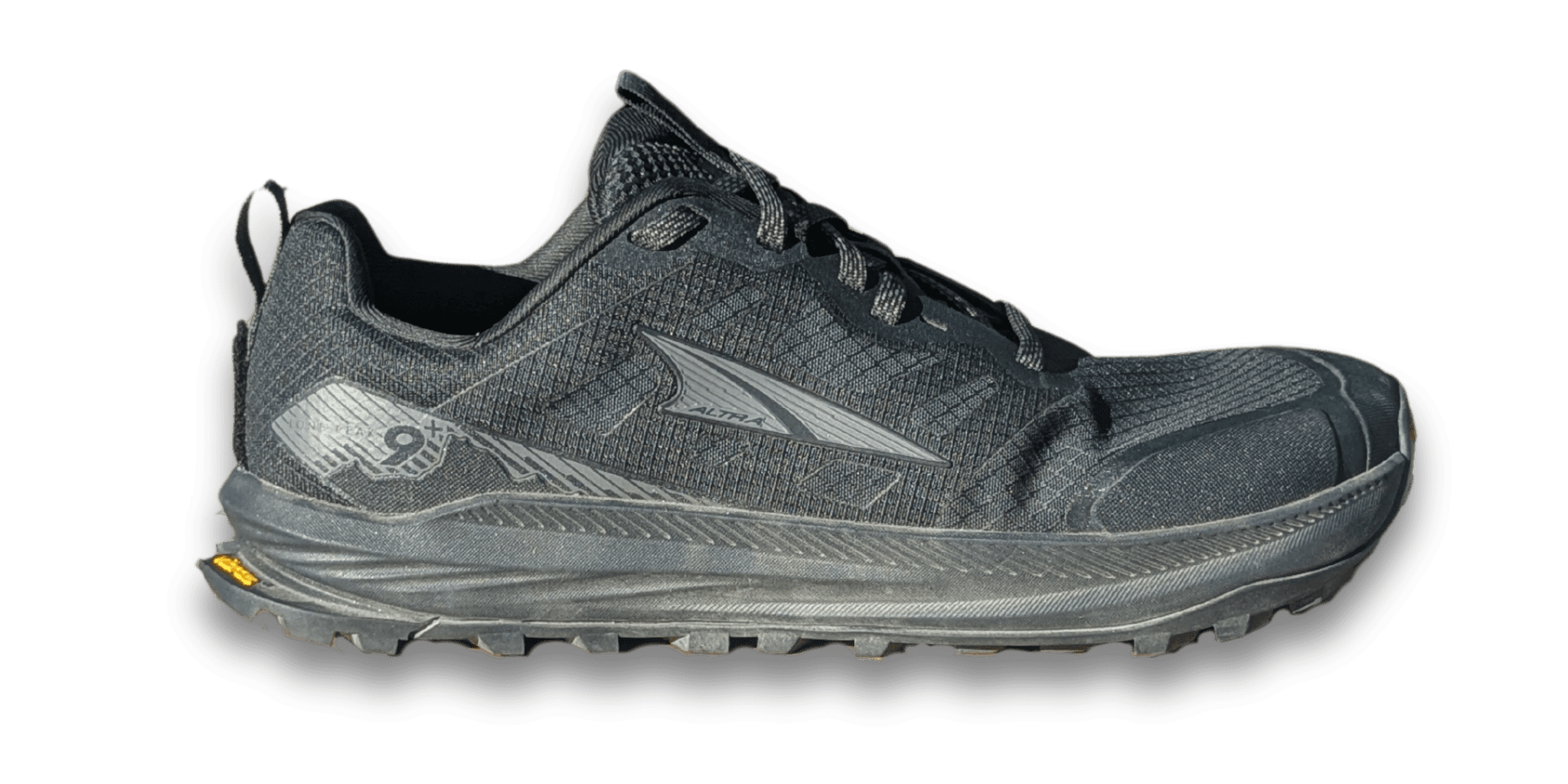



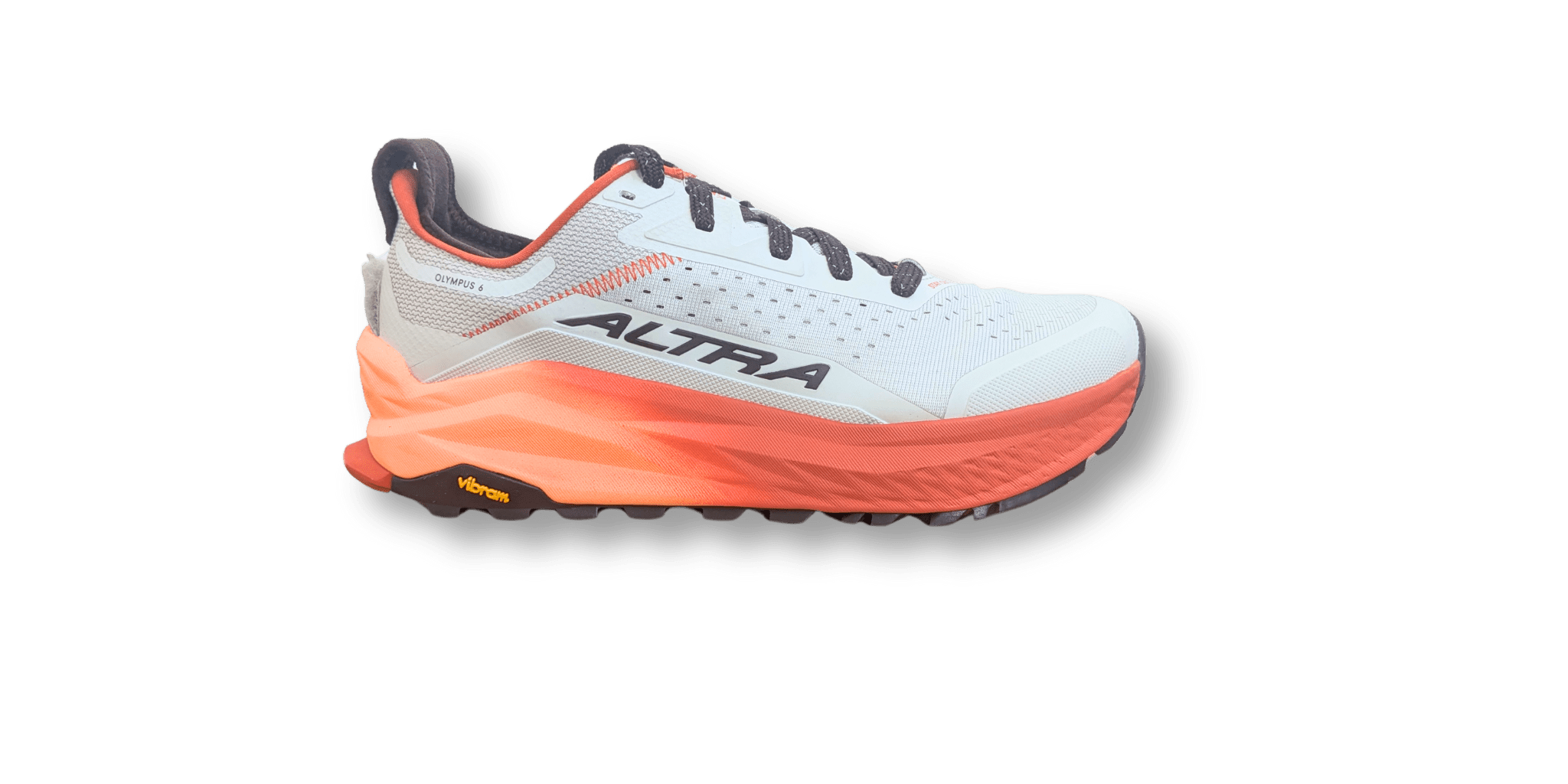
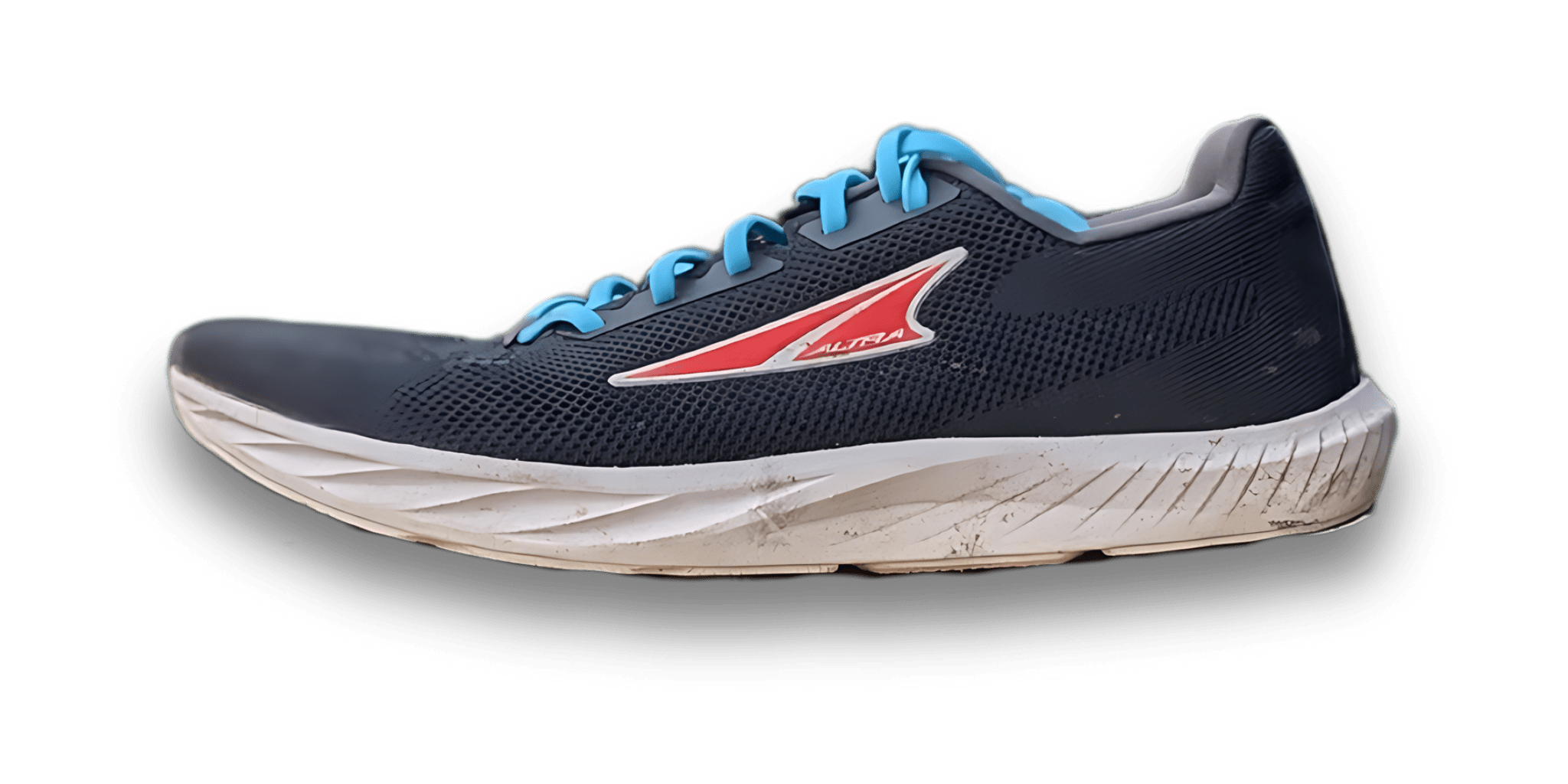
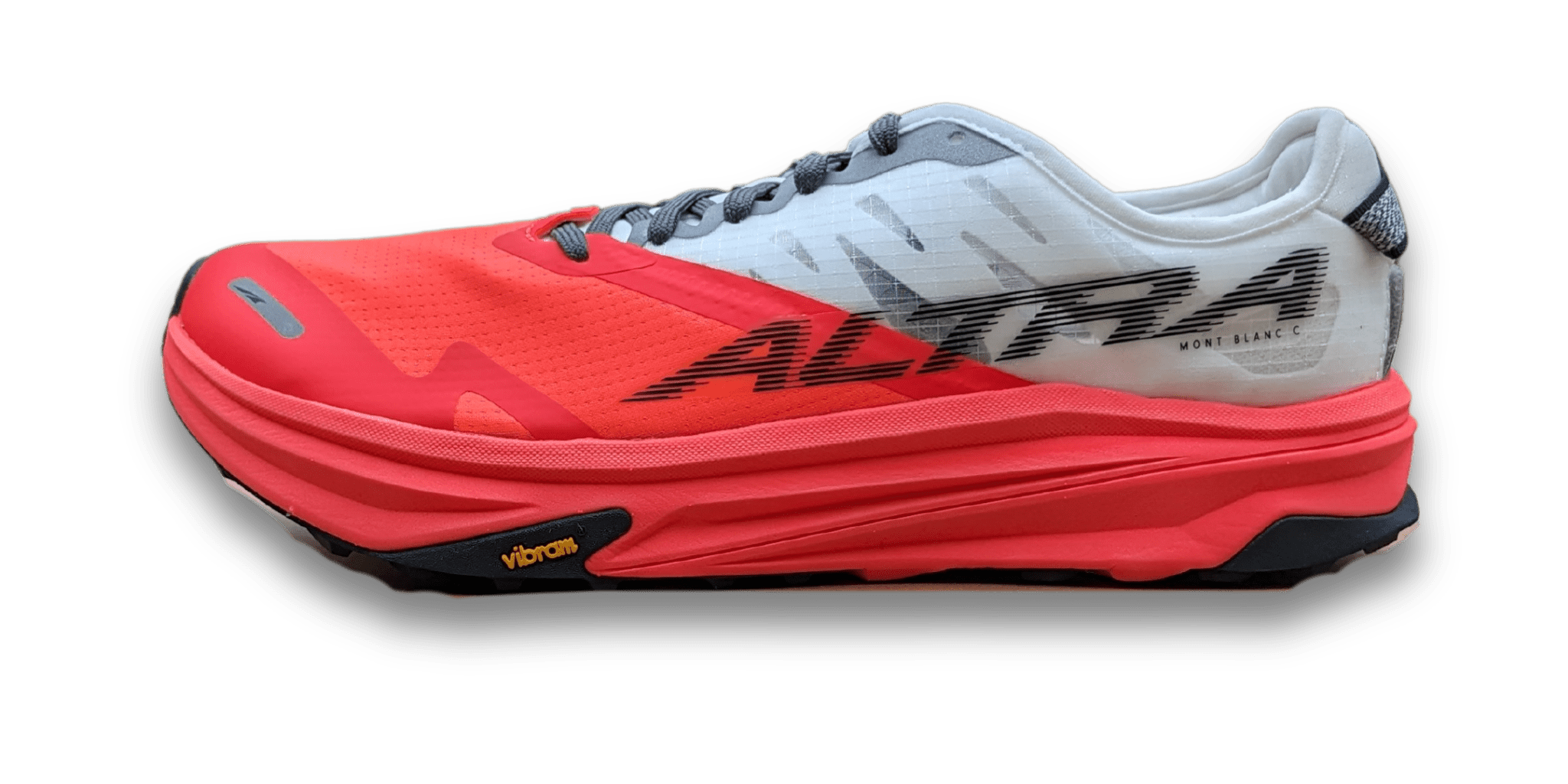

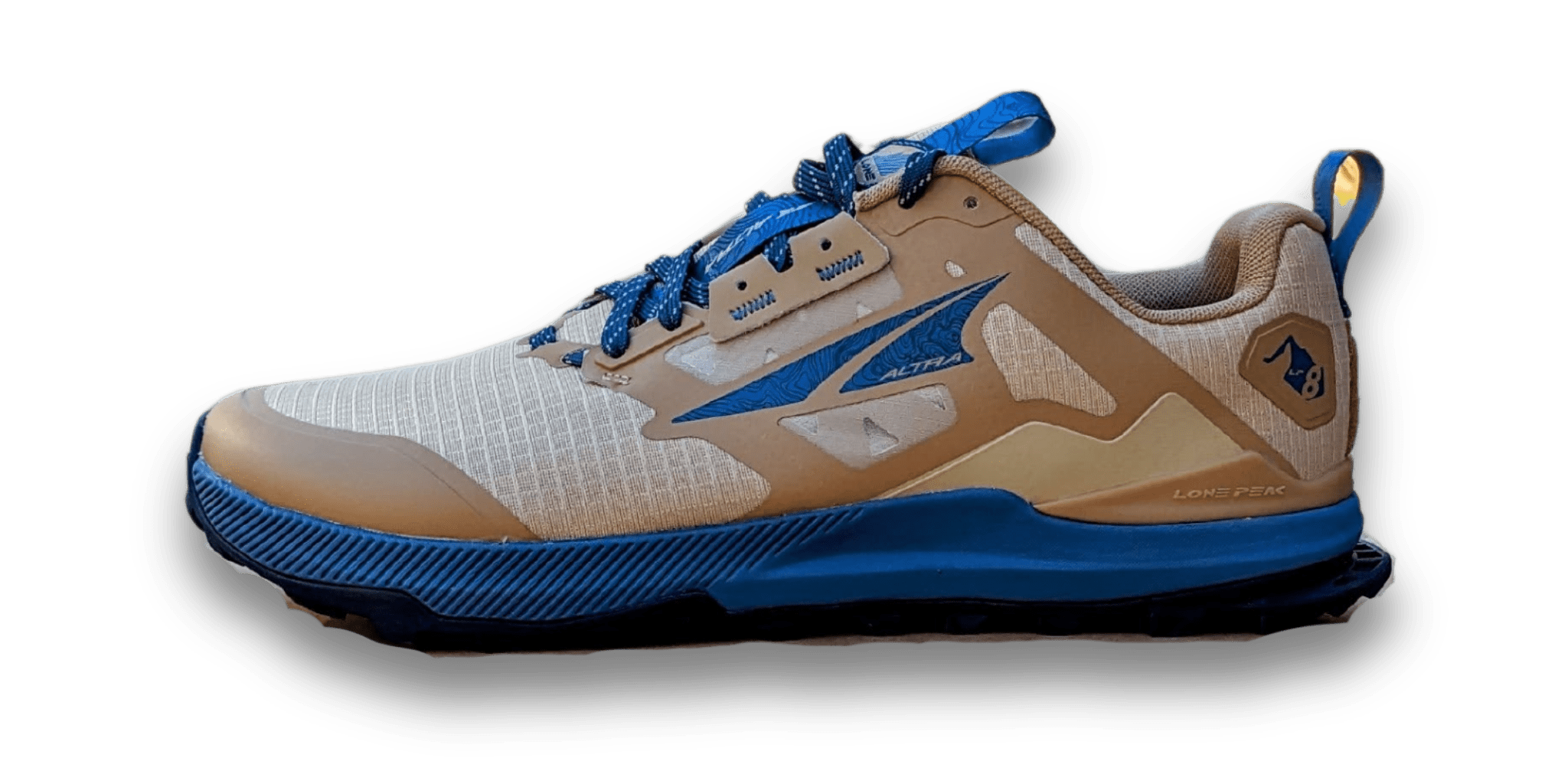
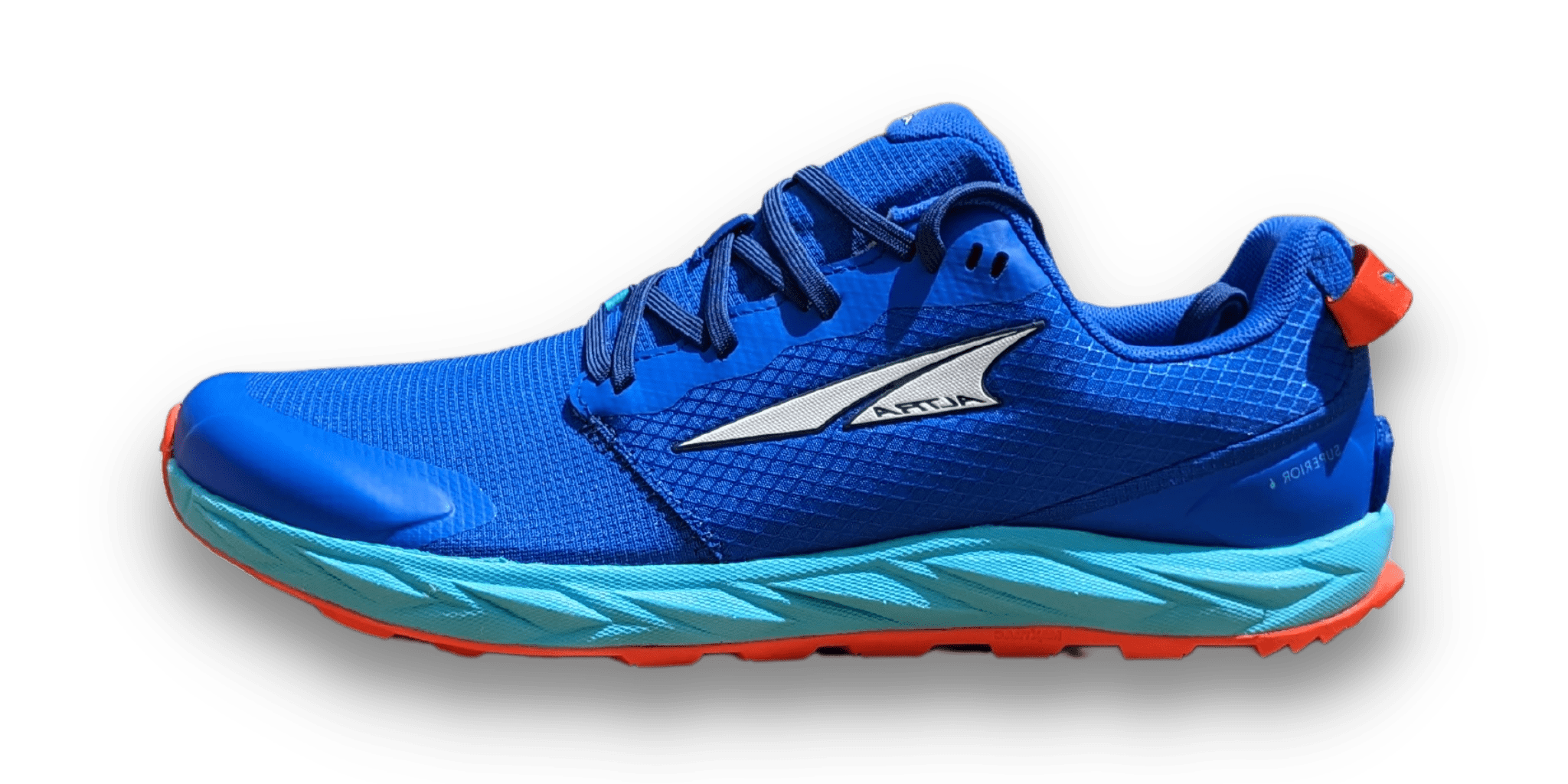
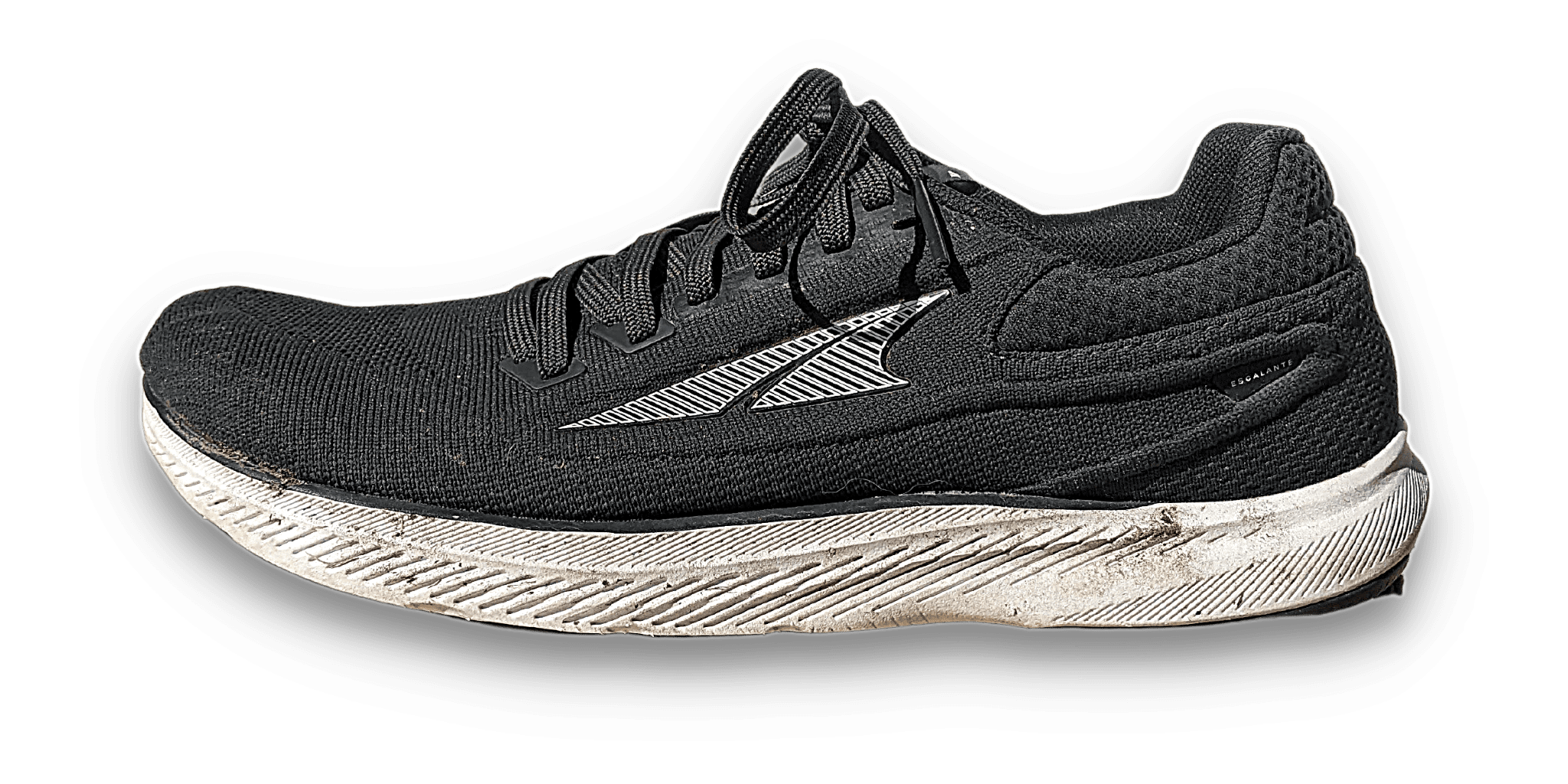
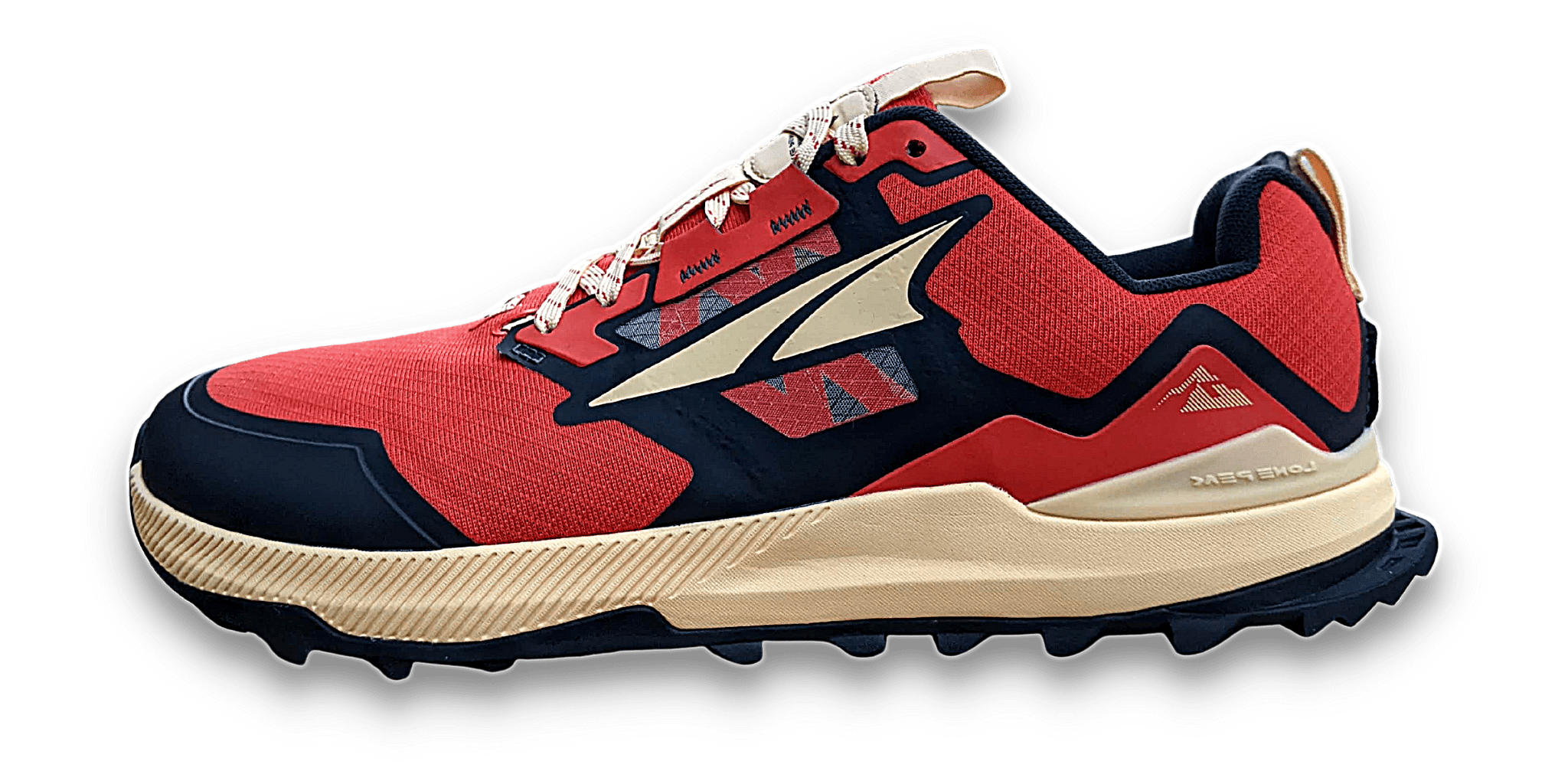




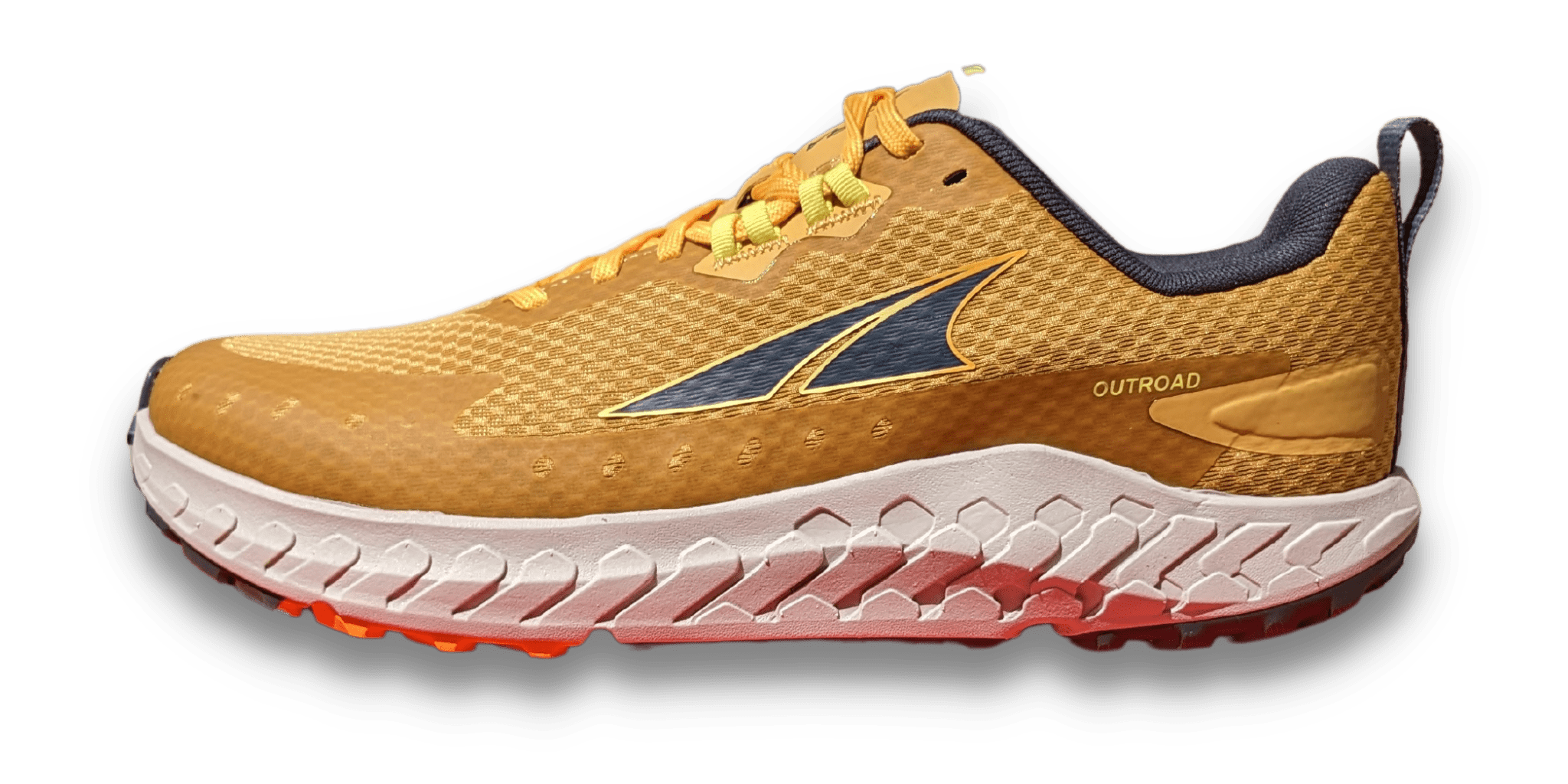
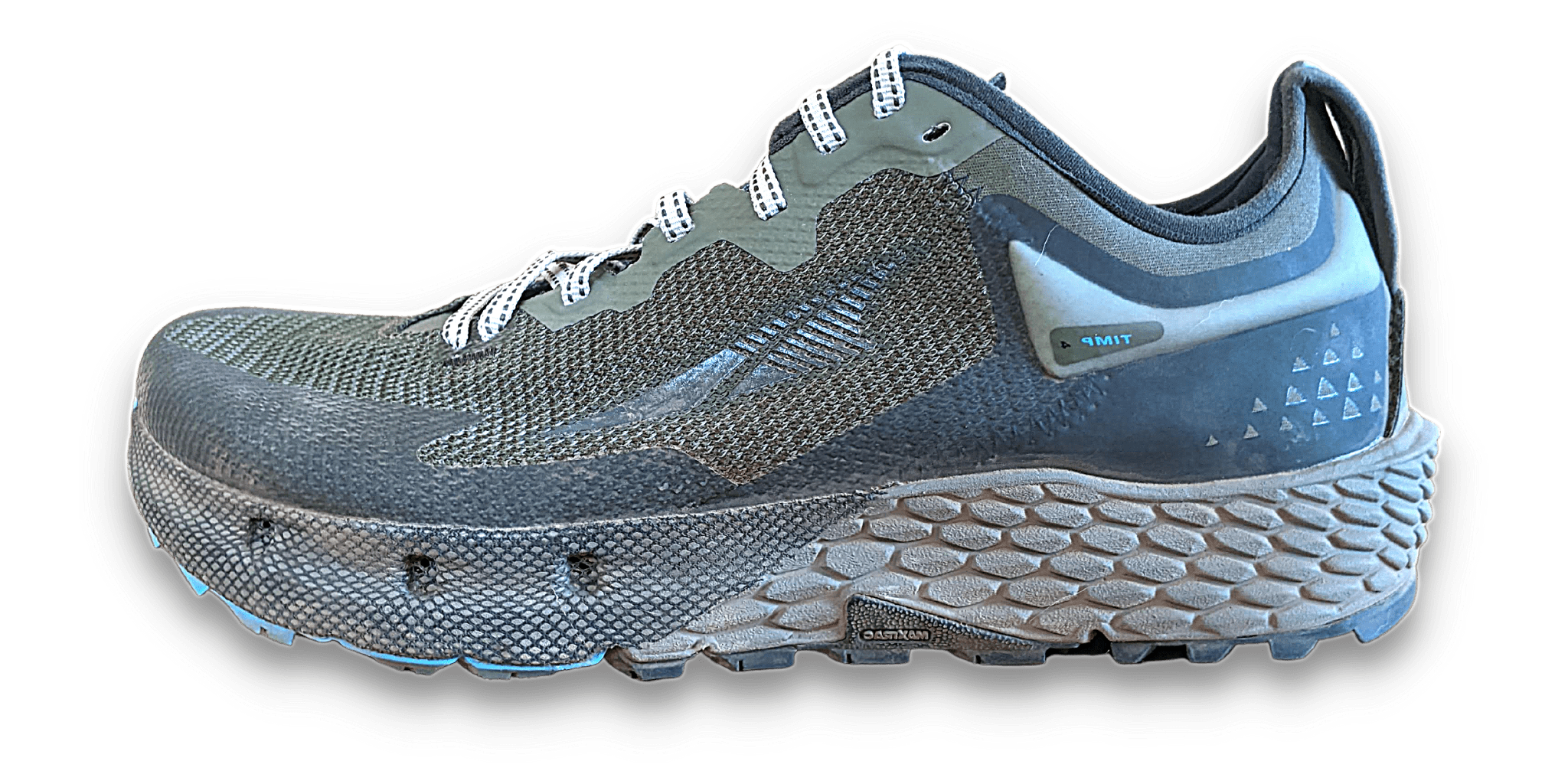
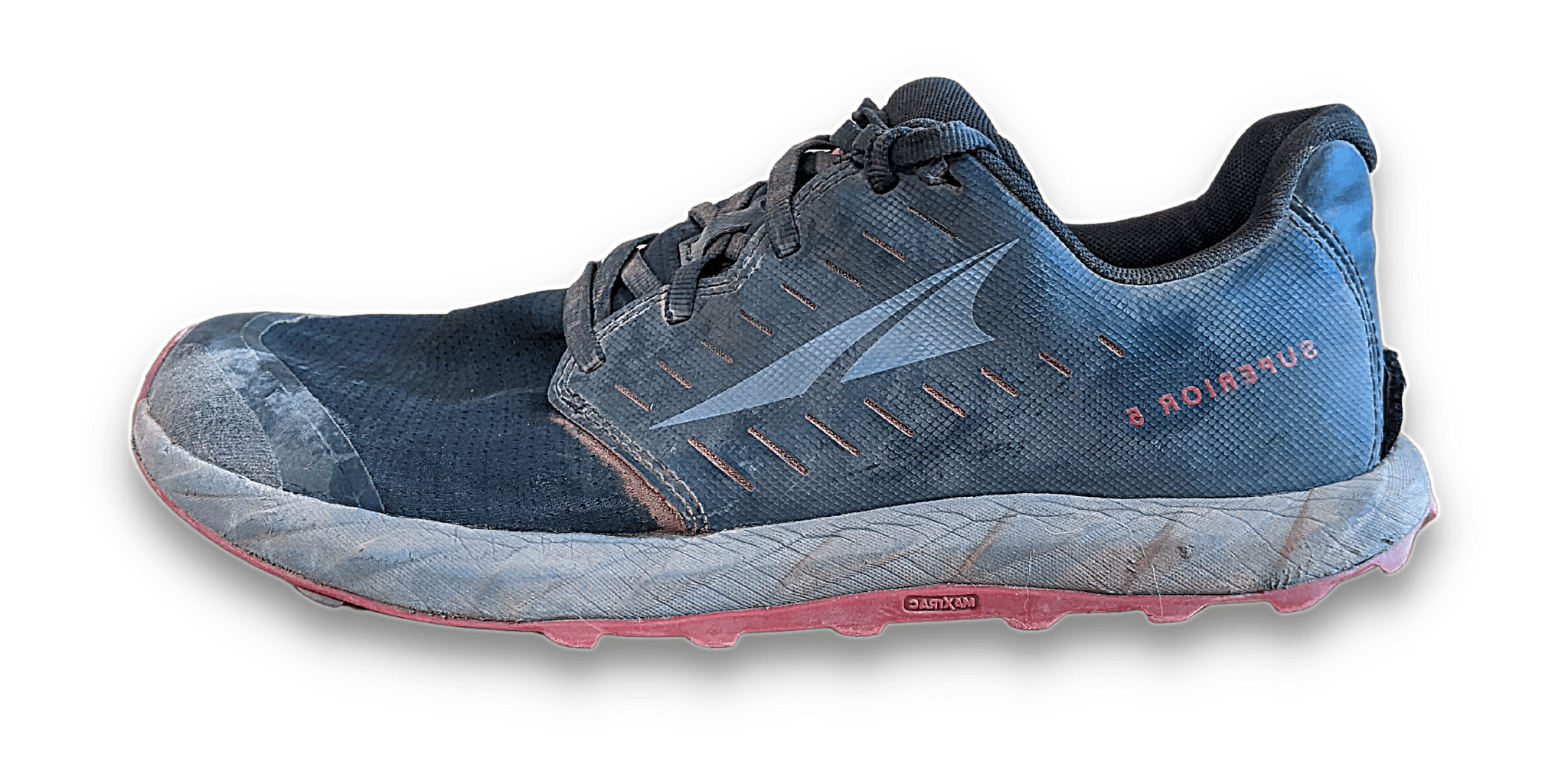
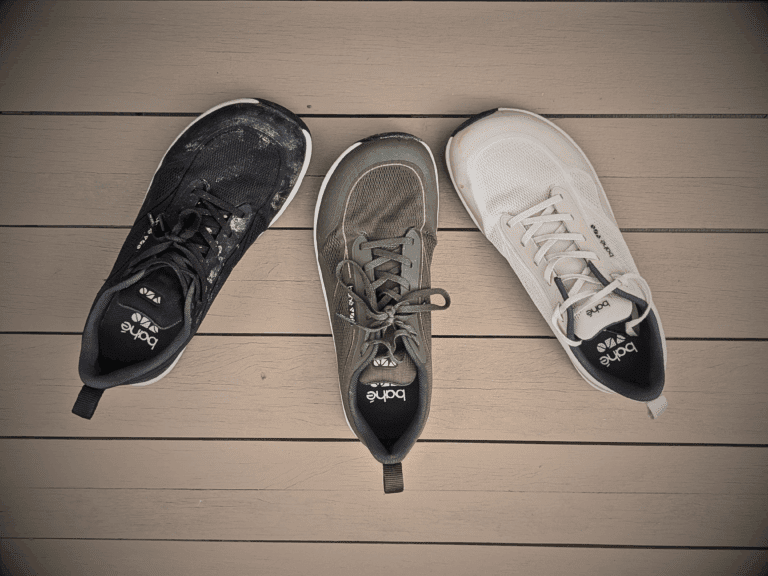

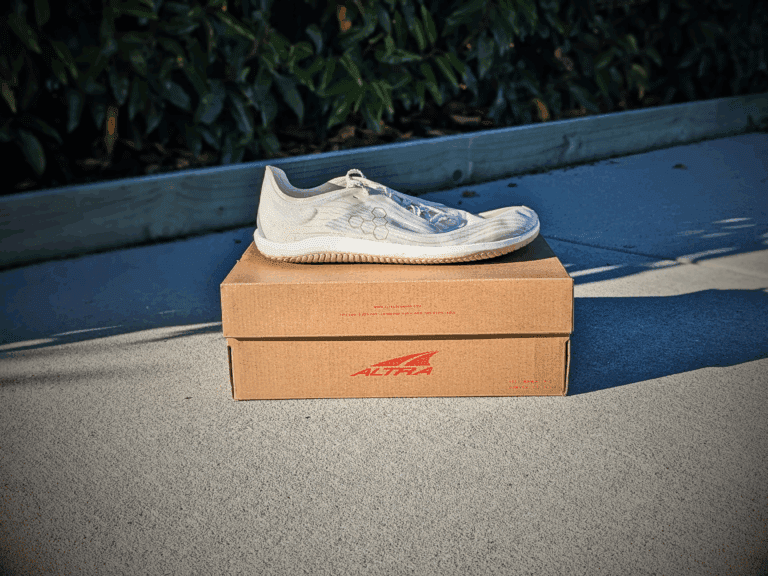
I found the toe cap on the Escalante 4 extended too far and rubbed at my toe nails. Is the internal toe cap on the Racer the same? The pics make it seem a little shorter maybe?
Good question. If anything, the more structured toe cap of the Racer is actually shorter. This is represented by the yellow material seen in the pictures on this post. Whereas, the Escalante 4 toe cap seems to be integrated into the weave of the upper. While not really a toe cap, it feels little more like a reinforced area of the weave, which is likely what you’re feeling.
With all that said, is it actually possible you’re having an issue with the toe cap because of the depth in the shoe, rather than the length? I have the same issue with the Escalante 4, and I have to use a thinner insole to make it work. Whereas, the Escalante Racer has a touch more depth, and I use the original insole that comes with the shoe.
So I think you’re left with 3 options.
– Try a different insole in the Escalante 4.
– Try the racer in the same size, as it has a touch more depth.
– Try a half size larger in either model to extend the toe cap away from your toes.
Excellent! I loved the original Racer, but as mentioned didn’t totally love the Escalante 4. Sounds like the Racer 2 will work for me!
Hi Nick, I’m literally in love with the Racer 2 excava, I got to 900km and I do everything, until 21km, beyond I have never tried. In your opinion, does the midsole lose cushioning, or being so little cushioned can last until the upper is torn?
It sure does lose cushioning and starts to become “flat”, but as long as your feet and ankles are strong enough, it makes little difference, especially because they’re lower to the ground. BUT beware, if your strength and conditioning is not optimized, this can have a negative effect because the area of the midsole that has broken down more will depress further only worsening symptoms. Personally, I run shoes until they’re quite literally broken, but it all comes with caveats!
scusa se ti disturbo ancora, le mie esclante racer 2 sono arrivate a 1000km, tomaia perfetta e suola in ottimo stato. c’è modo di capire come sta messa l’intersuola? premendo con le dite non percepisco differenze. tuttavia ultimamente ho spesso problemi tendinei, ma non vorrei dare colpa alle scarpe a priori, anche perchè ho fatto un paio di corse lunghe da 30km, quindi forse le scarpe non c’entrano. tuttavia volevo capire se c’è modo di capire come stanno messe. oppure per sicurezza consigli di cambiarle comunque a 1000km?
It’s hard to tell when the cushioning on a shoe is gone. It’s more a “feeling”. I personally run my shoes into the ground, but that’s because I’m relatively confident in my biomechanics. If we flip the question on it’s head, we could say how much loss in cushioning and in-balance can your body take. AND lastly, this is why a rotation is always great. Varying the gait through different shoes is a good way of ensuring we don’t overload one area.